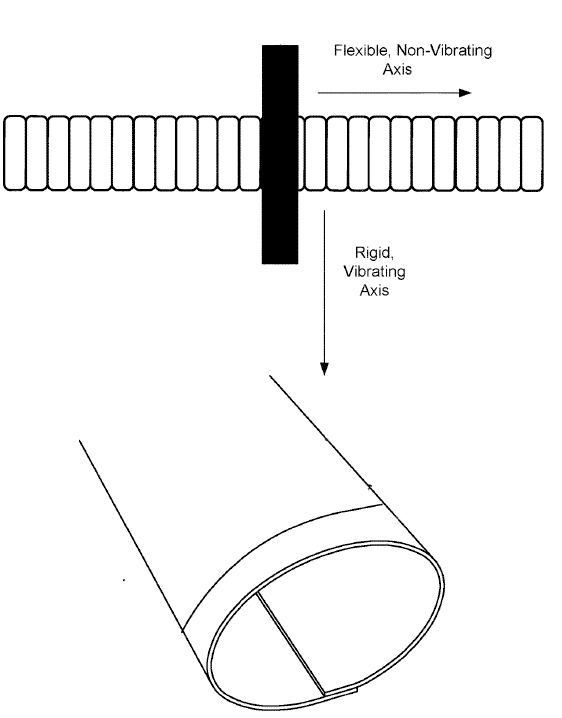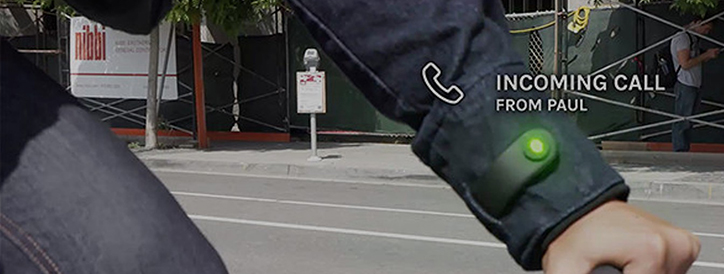Last year, on September 27, Jacquard (an interactive-garment project by Google™) along with Levi’s® (a global leader in clothing well-known for its denim jeans) unveiled and put on sale their first smart jacket, “Levi’s® Commuter™ Trucker jacket.”
The smart jacket not only looks “smart” but feels smart as well. The smart jacket allows you to save your new favorite coffee shop location with just a single swipe over a cuff of your jacket. You can even change a song from your music app by taping on the cuff of your jacket. Moreover, you can assign different gestures for multiple functionalities through an app on your smartphone.
Further, the smart jacket is well-suited for commuters as it can interact with ridesharing apps like Uber or Lyft. For instance, the smart jacket can give you an audio feedback or a haptic feedback when it’s time for you to hop into your cab or when your cab has arrived at your set location. However, with a conventional haptic feedback mechanism, a vibration sometimes may not be felt by a person wearing the smart jacket. But, with the latest patent from Google, a unique and efficient haptic feedback mechanism is revealed that will increase the likelihood that you will feel the vibration feedback from the smart jacket.
PATENTED TECHNOLOGY

A smart jacket by Google includes an interactive fabric (as shown in Figure 1). The interactive fabric is integrated into sleeves of the smart jacket through weaving or sewing. Further, the interactive fabric includes non-conductive threads woven with conductive threads. The non-conductive threads are conventional threads/fiber such as cotton, wool, silk etc. Whereas, the conductive threads are a combination of a conductive wire that is twisted with a flexible thread. The conductive threads are flexible and stretchy, which enables it to be easily woven with other threads to form the interactive fabric. Further, a sensing circuitry is also integrated with the smart jacket through the conductive threads. The sensing circuitry senses a type of gesture that is given by a user that is wearing the jacket. For instance, a swipe over the interactive fabric by you may be sensed by the sensing circuitry and a corresponding response will be triggered by a gesture manager. The gesture manager will recognize your interaction with the jacket, and in response, triggers various different types of functionality, such as answering a phone call, sending a text message, creating a journal etc.

Now, in order to provide a haptic feedback, the patented technology uses a single vibration source (therefore it requires less electrical power) that will vibrate multiple vibration points within the smart jacket, thereby increasing a likelihood that you will feel the vibration from the smart jacket. Figure 2 shows a haptic feedback mechanism comprising of a vibration source and a rigid transmission structure. The rigid transmission structure includes multiple rigid pieces attached to each other similar to a watch band that includes multiple pieces. Moreover, the rigid transmission structure is rigid along a vibration axis (as shown in Figure 2) and flexible along another axis (non-vibrating axis). Further, the vibration source coupled to the rigid transmission circuit. When the vibration source provides vibration to the rigid transmission structure, each of the individual pieces vibrates along the vibrating axis that can be felt by the person wearing the smart jacket.

Similarly, another haptic feedback mechanism is shown in Figure 3 with the vibration source and a transmission cable. The transmission cable is coupled to the vibration source and attached to the smart jacket at multiple different attachment points. Further, the transmission cable includes weights that are attached between each pair of attachment points (as shown in Figure 3). Further, the vibration source causes the transmission cable to oscillate, such that each of the weights makes contact with the person’s body.
WHAT IS YOUR TAKE?
So what do you think about this Patented technology by Google? Let us know in the comment section.
Publication Number: US20180307315
Patent Title: Haptic Feedback Mechanism for an Interactive Garment
Publication date: 2018-10-25
Filing date: 2017-06-14
Inventors: Nan-Wei GONG, Mustafa Emre Karagozler
Original Assignee: Google LLC
US20180307315


